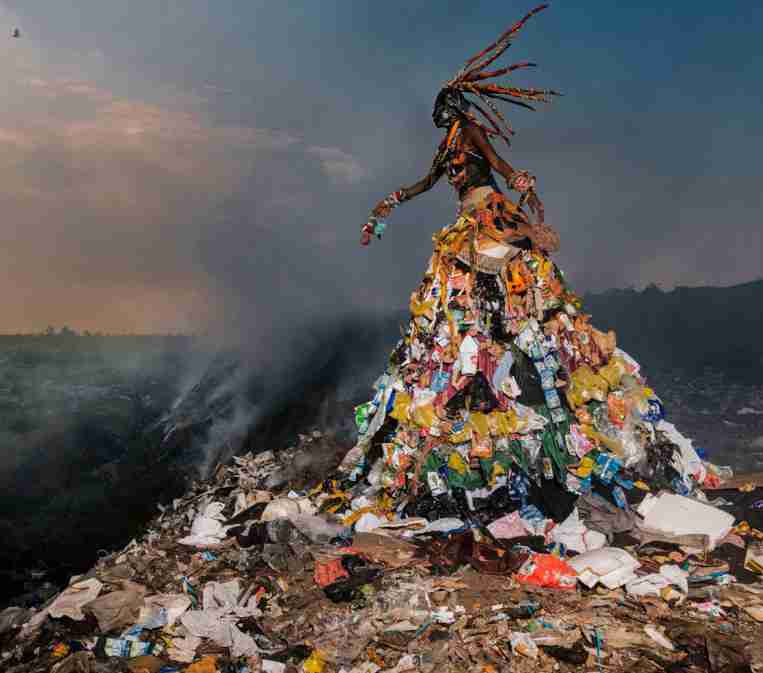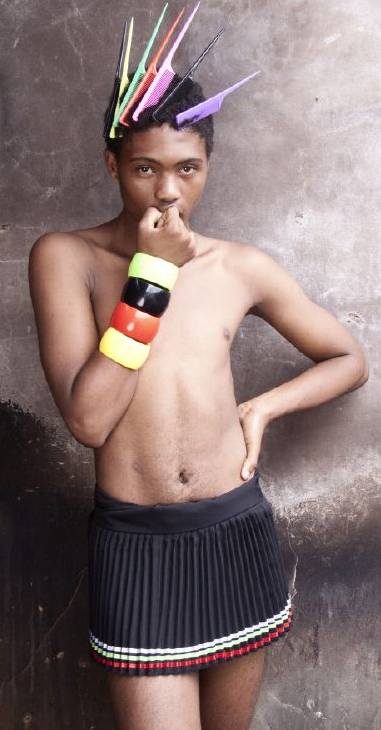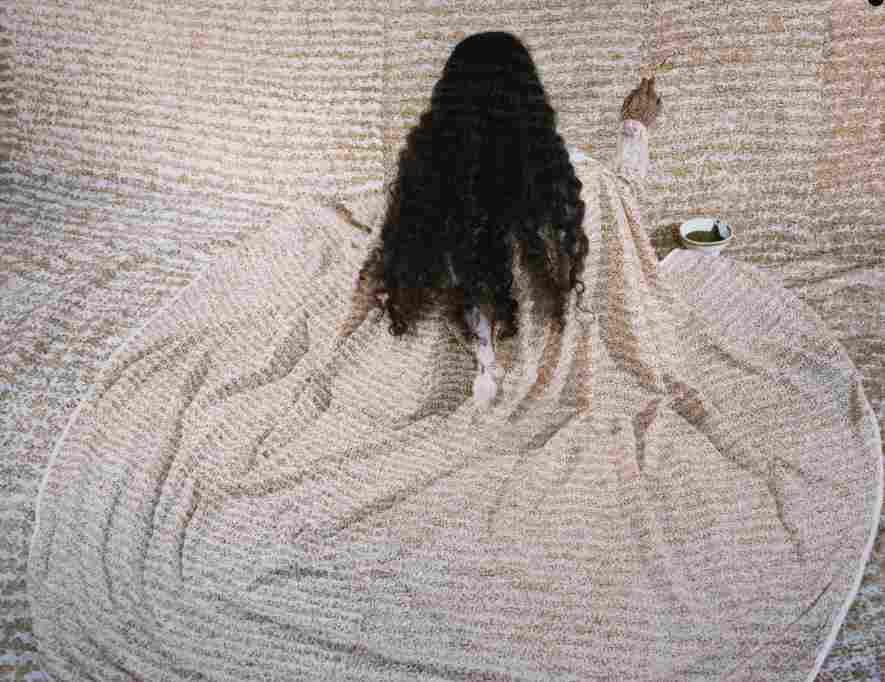Imagine
every time you saw the number seven it was green or the number
four was blue. You would have a cognitive condition called synesthesia.
It is a very rare aberration -- but it is an aberration that
proves a point. Humans like to believe that perception is a
constant and objective. The reality is --that we are seriously
flawed instruments when it comes to reading the worlds we occupy.
A large bundle of loose electrical connections in our head suspended
in a gelatinous material process every sensation we feel. What
synesthesia proves -- every perception we have -- is defined
as much by us as by the reality we are perceiving.
 Think
of how you experience reality as writing on a slate and every
experience you have adds information to that slate. Very quickly
you are forced to erase or just write over the experience. Not
only do you very quickly get detailed ornate and dense information,
but everything transcribed before begins to determine what is
written over it. Now consider that about a third of the experiences
you transcribe to this board are not real. The act of dreaming
is manufacturing perception. This manufacturing is ungoverned
by the laws of physics, time or gravity -- let alone manners
and decency.
Think
of how you experience reality as writing on a slate and every
experience you have adds information to that slate. Very quickly
you are forced to erase or just write over the experience. Not
only do you very quickly get detailed ornate and dense information,
but everything transcribed before begins to determine what is
written over it. Now consider that about a third of the experiences
you transcribe to this board are not real. The act of dreaming
is manufacturing perception. This manufacturing is ungoverned
by the laws of physics, time or gravity -- let alone manners
and decency.
Moroccan
born photographer, Lalla A. Essaydi lyrically illustrates this
dynamic with Converging Territories, #20. The c-print
depicts two naked women writing Arabic text in henna. One of
the women is slightly larger and lighter than the other. This
figure writes on the back of the smaller figure. The smaller
figure writes on a hanging sheet of white cloth. Essaydi takes
many of the ways in which people identify themselves and puts
them in a blender. Each element of the two figures has its own
signifier. Being naked suggests sexuality. The tone of the skin
suggests race. The writing reflects some religion or spirituality.
As these elements interact, they change each other. A prayer
written on flesh means something different than a prayer written
on cloth or paper. Essaydi constructs a metaphoric reference
between our bodies and our experience. We all know that shape,
size, color, gender and age of our bodies all affect we are
perceived. Essaydi shows that all of these elements also shape
our perceptions. 
By
articulating this interaction so well, Essaydi’s work
serves as the master key for African Art Against the State,
Williams College Museum of Art, Williamstown, Massachusetts.
An exhibition of twenty artists combined shows how difficult
it is to cull experience from perception. What we experience
and our identity get folded into each other to the point of
being indistinguishable.
Essaydi’s
work deals with personal identity. Some of the exhibition’s
most fascinating pieces deal with public identity. African
Art Against the State includes several anonymous works.
These include Sande (Bondo) Society Mask, a carved
wooden mask, Mende People, West Africa; 2 Ogboni
Society Kneeling Figures, Male and Female, Yoruba People, Nigeria;
and Power Figure (Buti) -- Teke People, Democratic Republic
of the Congo. These pieces exemplify the dynamic Essaydi’s
work illustrates. Instead of linking personal subconscious these
works intergrate a collective unconscious in their pieces. Psychiatrist
Carl Jung coined the term to describe imagery that is understood
by an entire species -- as if all of the blank slates in the
world had images imprinted on them and were never totally blank.
These works seem to support Jung’s proposition. While
the specific iconography is unknown, the viewer can intuitively
read the works.
Two
artists directly reference this outsider aesthetic in their
work; Beninese sculptor Romuald Hazoumè and Belgian-Beninese
photographer Fabrice Monteiro. Hazoumè exhibits two ‘jerry’
plastic gasoline cans that are altered to look like masks, titled
Before 1999 and After 1999. After is made
from a can that seems burnt and partially melted. The artist
uses the handle to represent the bridge of a nose and the pouring
spout as a mouth. The connecting part of the handle can be read
as a very dominant brow line. The brow furled and the mouth
pierced as in a yell -- the work suggests an exaggerated aggression.
By creating images that tap not only our pre-verbal but pre-iconographic
mind, Hazoumè’s pieces operate as contemporary
interpretations of the source material.
Fabrice
Monteiro’s staged photographs operate more as an appropriation
of his source material. Instead of creating masks, the photographer
dresses models in elaborate outfits that mimic the same stylized
aesthetic. He contributes three pieces from his Prophecy series:
Untitled #1, Untitled #2 and Untitled # 6, all from
2014. In each he used the refuse of industrialized society to
create fantastic and horrific creatures. The figure in Untitled
#1 stands in a mound of midden that forms a skirt creating
the illusion that the figure has three-meter long legs. While
the work depicts what could be a dream, it is a very deliberate
and conscious work.
 Monteiro
uses elements of the subconscious -- the distortion of reality
afforded in dream space, to create a surreal image. Two of the
exhibition’s artists use human sexuality in the same way
Georgia O’Keeffe’s flowers allude to vaginas. This
parallels how people think through the conscious and subconscious.
The exhibition includes two artists who invert how the audience
thinks about visual double entendre. Artist Zanele Muholi and
Yinka Shonibare use overt sexuality in their work. It is the
obvious text, presenting a subtext that is decidedly political.
Monteiro
uses elements of the subconscious -- the distortion of reality
afforded in dream space, to create a surreal image. Two of the
exhibition’s artists use human sexuality in the same way
Georgia O’Keeffe’s flowers allude to vaginas. This
parallels how people think through the conscious and subconscious.
The exhibition includes two artists who invert how the audience
thinks about visual double entendre. Artist Zanele Muholi and
Yinka Shonibare use overt sexuality in their work. It is the
obvious text, presenting a subtext that is decidedly political.
South
African photographer Muholi’s Mini Mbatha, Durban,
Glebelands, Jan. 2010 depicts a man dressed in a skirt
and bracelets with a five multicolored combs acting as a headpiece.
The piece belonged to the artist’s Beulahs (2006–2010)
series, which documented gay and transgendered men. The portrayed
man turns identity into a political statement. There is a deliberateness
to this figure. Dressed as a warrior the person asserts control
over their perception. This raises the act of sexual preference
and gender identity to a political statement.
While
Muholi’s portraits are intimate and specific, Yinka Shonibare’s
uses sexuality anonymously in Gallantry and Criminal Conversation
(Parasol), 2002, a sculpture showing two fornicating, headless
mannequins. Shonibare dresses the figures in Georgian fashions
made with faux African patterned cloth. The sexuality becomes
the work’s overt content. The work depicts misappropriations.
African textiles are rendered down to heavily patterned multi
hue cloths with no meaning. The European clothes are completely
antiquated and irrelevant to contemporary life.
Curator
Michelle Apotsos intentionally includes a pun in the exhibition’s
title. African Art Against the State leads its audience
to assume the exhibition is dealing with government. Walking
through the exhibition, it becomes clear it is subverting more
than political institutions. These artists undermine states
of consciousness and confidence. At it’s best African
Art Against the State forces its audience to consider that
what they think they know, may only be what they believe.
By
Anthony Merino:
Code
Replaces Creativity
Updating
Walter Benjamin
Ego
and Art
Nick
Cave & Funk(adelic)
Foucault
for Dummies